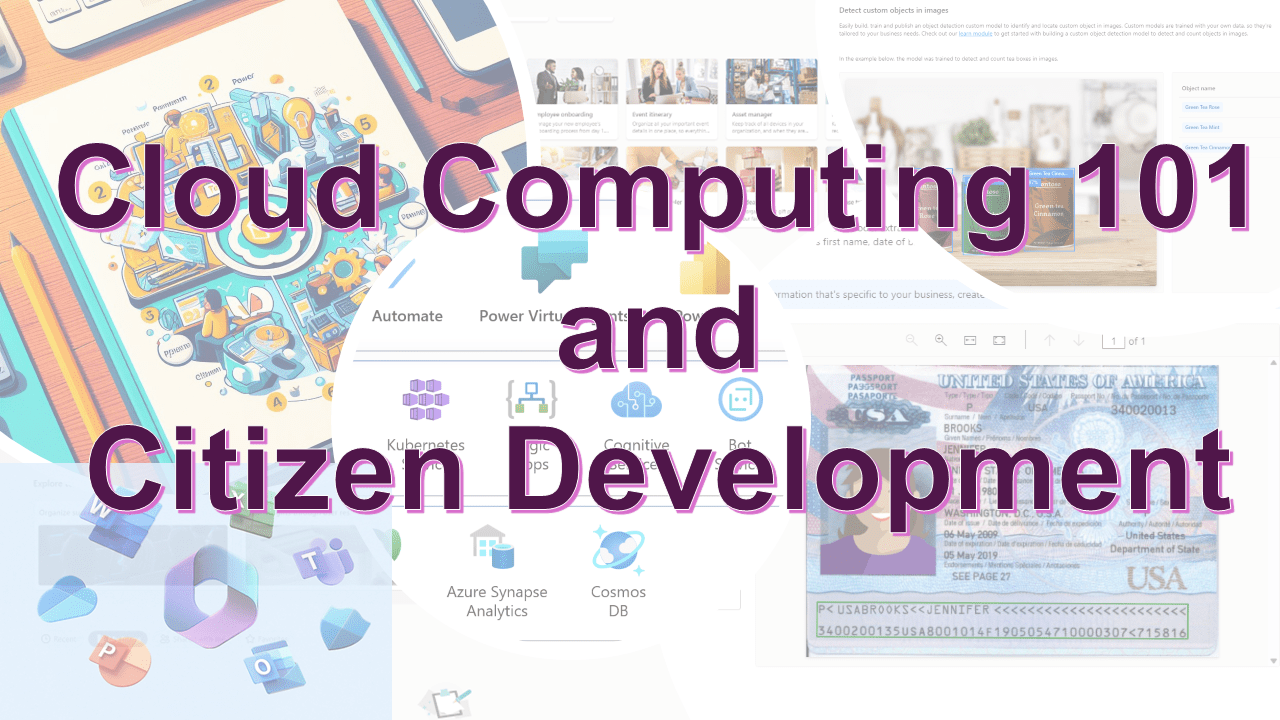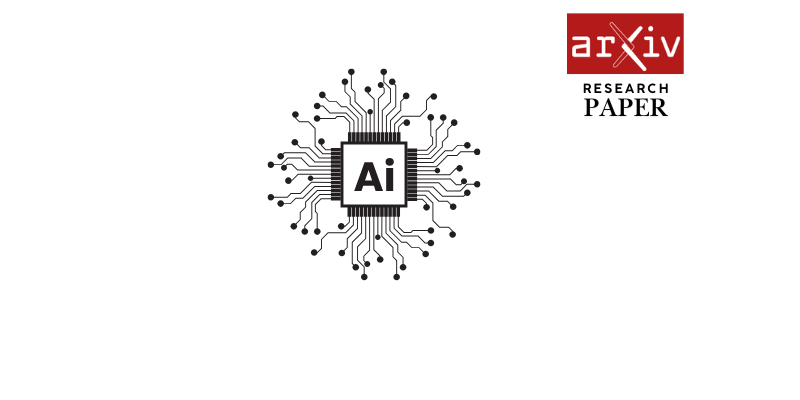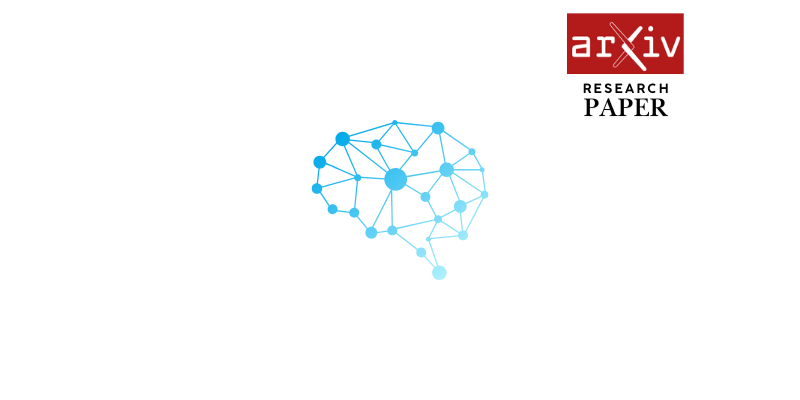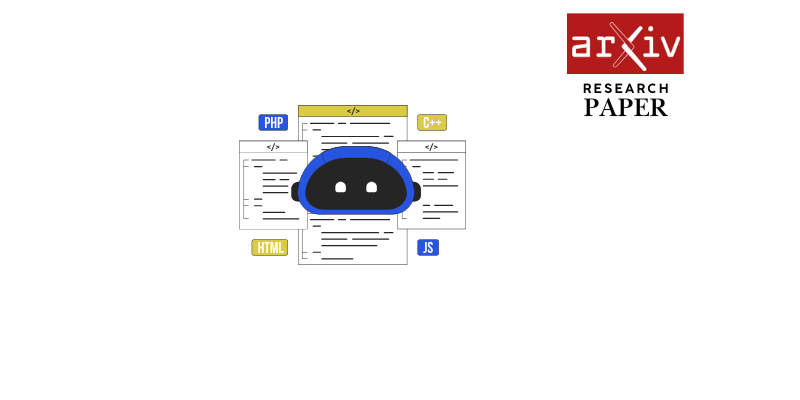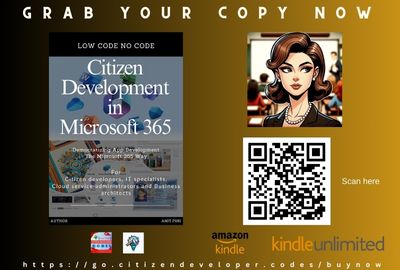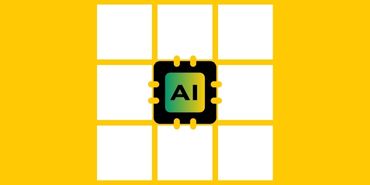Authors: Sharath Turuvekere Sreenivas, Saurav Muralidharan, Raviraj Joshi, Marcin Chochowski, Ameya Sunil Mahabaleshwarkar, Gerald Shen, Jiaqi Zeng, Zijia Chen, Yoshi Suhara, Shizhe Diao, Chenhan Yu, Wei-Chun Chen, Hayley Ross, Oluwatobi Olabiyi, Ashwath Aithal, Oleksii Kuchaiev, Daniel Korzekwa, Pavlo Molchanov, Mostofa Patwary, Mohammad Shoeybi, Jan Kautz, Bryan Catanzaro
Page 1:
2024-12-10
LLM Pruning and Distillation in Practice: The
Minitron Approach
Sharath Turuvekere Sreenivas*, Saurav Muralidharan*, Raviraj Joshi, Marcin Chochowski,
Ameya Sunil Mahabaleshwarkar, Gerald Shen, Jiaqi Zeng, Zijia Chen, Yoshi Suhara, Shizhe Diao,
Chenhan Yu, Wei-Chun Chen, Hayley Ross, Oluwatobi Olabiyi, Ashwath Aithal, Oleksii
Kuchaiev, Daniel Korzekwa, Pavlo Molchanov, Mostofa Patwary, Mohammad Shoeybi, Jan
Kautz, and Bryan Catanzaro
Abstract: Structured pruning with knowledge distillation is a potent combination for obtaining small
language models (SLMs) with significantly fewer training tokens and compute resources compared to training
from scratch. In this work, we investigate how this strategy can be effectively applied in instances where
access to the the original pretraining dataset is restricted. We introduce a new teacher correction phase
before distillation which lets the teacher model adjust to our specific data distribution using a lightweight
fine-tuning phase. We apply this strategy to compress the Mistral NeMo 12B and Llama 3.1 8B models to 8B
and 4B parameters, respectively, using pruning and distillation. We explore two distinct pruning strategies:
(1) depth pruning and (2) joint hidden/attention/MLP (width) pruning, and evaluate the results on common
benchmarks from the LM Evaluation Harness. The models are then aligned with NeMo Aligner and further
tested for instruction following, role-play, math, coding and function calling capabilities. This approach
produces the state-of-the-art Mistral-NeMo-Minitron-8B ( MN-Minitron-8B for brevity) model from
Mistral NeMo 12B, and a compelling 4B model from Llama 3.1 8B. We open-source our base model weights
on Hugging Face with a permissive license.
Models on Hugging Face: Mistral-NeMo-Minitron-8B-Base | Llama-3.1-Minitron-4B-Width-Base
| Llama-3.1-Minitron-4B-Depth-Base
Introduction
LLM providers often train an entire family of models
from scratch, each with a different size (number of
parameters, e.g. Llama 3.1 with 8B, 70B, and 405B
parameters [ 1]); this is done to aid users targeting
different deployment scales, sizes and compute bud-
gets. However, training multiple billion-plus parame-
ter models from scratch is extremely time-, data- and
resource-intensive. Recent work has demonstrated
the effectiveness of combining weight pruning with
knowledge distillation to significantly reduce the cost
of training LLM model families [ 2]. Here, only the
biggest model in the family is trained from scratch;
other models are obtained by successively pruning
the bigger model(s) and then performing knowledge
distillation [ 3] to recover the accuracy of pruned mod-
els. While highly effective, this line of work assumes
access to the original pretraining dataset for the dis-
tillation phase. With a growing number of frontier
LLMs (including open ones) being trained on private,
proprietary datasets [ 1,4], this assumption often fails
to hold.
In this work, we adapt the original Minitron com-
pression recipe [ 2] along two directions: (1) we intro-
Pretrained model(Mistral-NeMo-12B, LLaMa 3.1 8B etc)
Corrected TeacherTeacherCorrection(127B)Pruning
Student
Minitron modelDistillation(<400B)Figure 1|High-level overview of our proposed pruning
and distillation approach. The total number of tokens
used for each step is indicated in parentheses.
duce a new teacher correction phase for adapting the
teacher (unpruned) model to our own data distribu-
tion, thus removing any need to access the original
pretraining dataset, and (2) we introduce a new and
more effective downstream task-based saliency cri-
teria for depth pruning. We successfully apply our
updated compression strategy to two state-of-the-art
models: Llama 3.1 8B [ 1] and Mistral NeMo 12B [ 5],
compressing them down to 4B and 8B parameters, re-
spectively. For Llama 3.1 8B, we produce two distinct
compressed models in the 4B parameter range: (1)
Llama 3.1-Minitron-4B -Width (pruning only
the width axes), and (2) Llama 3.1-Minitron-
* Equal contribution.
©2024 NVIDIA. All rights reserved.arXiv:2408.11796v4 [cs.CL] 9 Dec 2024
Page 2:
LLM Pruning and Distillation in Practice: The Minitron Approach
Benchmarks (shots) Gemma2 Minitron Llama-3.1-Minitron Gemma Mistral Llama 3.1 MN-Minitron Mistral NeMo
2B* 4B 4B-Depth 4B-Width 7B 7B 8B 8B 12B-Base 12B-FT
Total Params 2.6B 4.2B 4.5B 4.5B 8.5B 7.3B 8B 8.4B 12.2B 12.2B
Non-Emb. Params 2B 2.6B 3.7B 3.7B 7.7B 7B 7B 7.3B 10.9B 10.9B
Training Tokens 2T 94B 94B 94B 6T 8T 15T 380B - +0.1T
Winogrande(5) 70.9 74.0 72.1 73.5 78 78.5 77.3 80.4 82.2 82.7
Arc_challenge(25) 55.4 50.9 52.6 55.6 61 60.3 57.9 64.4 65.1 62.3
MMLU(5) 51.3 58.6 58.7 60.5 64 64.1 65.3 69.5 69.0 70.1
Hellaswag(10) 73.0 75.0 73.2 76.1 82 83.2 81.8 83.0 85.2 85.3
GSM8k(5) 23.9 24.1 16.8 41.2 50 37.0 48.6 58.5 56.4 55.7
Truthfulqa(0) - 42.9 38.2 42.9 45 42.6 45.0 47.6 49.8 48.3
XLSum en(20%) (3) - 29.5 27.2 28.7 17 4.8 30.0 32.0 33.4 31.9
MBPP(0) 29.0 28.2 30.7 32.4 39 38.8 42.3 43.8 42.6 47.9
HumanEval(n=20)(0) 20.1 23.3 - - 32.0 28.7 24.8 36.2 23.8 23.8
Table 1|Accuracy numbers for our MN-Minitron-8B andLlama 3.1-Minitron-4B models.
We compare our models to similarly-sized SoTA open models on a variety of common language modeling
benchmarks. All evaluations are conducted by us, except entries marked with * (taken from corresponding
papers).
Benchmarks (shots) Phi-2 Gemma2 Qwen2 Minitron Llama-3.1-Minitron LLama 3.1 MN-Minitron
2.7B 2B 1.5B 4B 4B-Depth 4B-Width 8B 8B
MT-Bench (GPT4-Turbo) 5.14 7.44 5.49 6.46 6.19 6.88 7.78 7.86
MMLU (5) 56.8 56.9 55.6 59.3 61.21 59.89 69.4* 70.4
GSM8K (0) 19.9 52.2 27.2 65.1 71.11 79.76 83.8 87.1
GPQA (0) 28.8 25.9 28.1 29.5 32.59 30.36 30.4* 31.5
HumanEval (0) 47.6* 45.1 47.0* 39.6 42.7 47.0 72.6 71.3
MBPP (0) 55.0* 50.4 51.9* 57.4 60.3 65.1 72.8* 72.5
IFEval 44.0 64.5 39.8 75.3 66.77 79.54 80.4* 84.4
BFCLv2 (Live) 38.7 40.2 39.9 53.1 55.89 55.0 44.3 67.6
Table 2|Accuracy numbers for instruction tuned models on a variety of benchmarks. All evaluations are
conducted by us, except entries marked with * (taken from corresponding papers). Best of each section in
bold. For IFEval, we report the average of prompt and instruction across loose and strict evaluations. For
BFCLv2, we report live accuracy only.
4B-Depth (pruning depth only). Figure 1 provides a
high-level overview of our approach.
Tables 1 and 2 provide a summary of our results:
our compression strategy yield a state-of-the-art 8B
model ( MN-Minitron-8B ) which outperforms
all similarly-sized models across the board on com-
mon language modeling benchmarks. Our Llama
3.1-Minitron-4B models (both depth and width-
pruned variants) also exhibit strong accuracy com-
pared to the teacher Llama 3.1 8B model and the
previous-generation Minitron-4B model [ 2]; among
the two variants, the width-pruned variant achieves
better overall accuracy than the depth-pruned one. In
terms of runtime inference performance measured us-
ing TensorRT-LLM, the Llama 3.1-Minitron-
4Bmodels provide an average speedup of 2.7 ×and
1.8×for the depth and width pruned variants, re-
spectively, compared to the original Llama 3.1 8B
model.
Methodology
A high-level overview of our approach is illustrated
in Figure 1. Here, the teacher model undergoes alightweight adjustment phase on the target dataset to
beusedfordistillation-werefertothisstepas teacher
correction . Next, pruning is applied to compress the
model, following which distillation is used to recover
model accuracy.
Teacher Correction
Distillation is an effective technique to condense
knowledge from a more accurate teacher model to
improve a less accurate student model [ 3] [2]. Typi-
cally, knowledge is distilled using the same dataset the
teacher model was trained on. In cases where access
to the original training data is restricted, we notice
from our experiments that the teacher model provides
sub-optimal guidance if a different dataset is used to
distill the knowledge. We hypothesize this is due to
the change in distribution of sub-word tokens across
the original dataset the teacher model was trained
on vs. the dataset being distilled on. To this end, we
propose a novel teacher correction phase (illustrated
in Figure 2), where we perform a lightweight ( ∼100B
tokens) fine-tuning of the teacher model to adapt to
the new distillation dataset. We demonstrate in our
experimental evaluation (Figure 4 in particular) that
2
Page 3:
LLM Pruning and Distillation in Practice: The Minitron Approach
Embedding
Embeddi
ng
Input token
KL
Divergence
Frozen Trainable
Loss
Input token
Embedding
Transformer
Layers
LM head
Softmax
Logits
Cross -
entropy loss
Next tokenStep 1. Teacher correction Step 2. Retraining via Distillation
Transformer
Layers
Transformer
Layers
LM head
Softmax
Logits
LM head
Softmax
LogitsTeacher
Student
Figure 2|Overview of distillation: if/when the original training data is unavailable, a lightweight fine-tuning
of the original model on the distillation dataset is recommended, to be used as a teacher. Distillation is then
performed by minimizing KL divergence on the logits of the teacher and the pruned student model.
this procedure significantly improves the guidance
resulting in a more accurate student model. We also
explore correcting the teacher in parallel to distilla-
tion, and demonstrate that this performs on par with
using guidance from a fully corrected teacher.
Pruning
Weight pruning is a powerful and well-known tech-
nique for reducing model size. In this work, we focus
on structured pruning, where blocks (or channels) of
nonzero elements are removed at once from model
weights; examples of structured pruning techniques
include neuron, attention head, convolutional filter,
and depth pruning [ 6,7,8,9]. We follow the pruning
recipe outlined in Minitron [ 2]: as shown in Figure 3,
we start the pruning process by first computing the
importance of each layer, neuron, head, and embed-
ding dimension. We then sort these importance scores
to compute a corresponding importance ranking.
Importance Estimation We use a purely activation-
based importance estimation strategy that simulta-
neously computes sensitivity information for all the
axes we consider (depth, neuron, head, and embed-
ding channel) using a small calibration dataset and
only forward propagation passes. We consider depth
pruning as a special case and do not combine it with
compressing other dimensions. We compute the im-
portance of each head, neuron and embedding channel
by examining the activations produced by the multi-
head attention (MHA), multi-layer perceptron (MLP)
and LayerNorm layers, respectively. We use a small
calibration dataset (1024 samples) drawn randomly
from the full dataset for this purpose.
Layer Importance For depth pruning, we consider
two distinct metrics for evaluating layer importance:
(1) LM validation loss/PPL, and (2) accuracy on the
downstream task. We do not consider the Block Im-portance (BI) metric [ 8] as it was recently shown to
under-perform the validation loss/PPL metric [ 2]. For
ranking, we simply remove a single or a block of con-
tiguous layers and compute its effect on each metric;
this serves as the “importance” or sensitivity of the
layer/layerblock. Basedonourempiricalanalysis(see
Figures 8 and 9), we use the Winogrande metric [ 10]
to prune sets of contiguous layers. This pruning strat-
egy evolved from two important observations: (1) LM
validation loss/PPL-based layer importance fails to
produce the most accurate pruned model(s) on down-
stream tasks, and (2) dropping contiguous layers is
better than individual, as also observed in Gromov
et al. [11].
Model Trimming Following Minitron [ 2], for a given
architecture configuration, we first rank the elements
of each axis according to the computed importance
and perform trimming of the corresponding weight
matrices directly. For neuron and head pruning, we
trim MLP and MHA layer weights, respectively. In
the case of embedding channels, we trim the embed-
ding dimension of the weight matrices in MLP, MHA,
and LayerNorm layers. The original approach uses
Neural Architecture Search (NAS) to find the best ar-
chitecture; in this work, we skip this step and instead
utilize the network architecture-related learnings from
the original paper.
Retraining with Distillation
We use the term retraining to refer to the accuracy re-
covery process post pruning. In this work, we explore
two retraining strategies: (1) conventional training,
leveraging ground truth labels, and (2) knowledge dis-
tillation using supervision from the unpruned model
(teacher). Knowledge Distillation (KD) [ 3] involves
transfer of knowledge from a larger or more com-
plex model called the teacher to a smaller/simpler
3
Page 4:
LLM Pruning and Distillation in Practice: The Minitron Approach
Embedding
Transformer Block
Layer L
Layer normLayer normAttentionMLP1. Trained LLM
3. RankIterative5. Distillation2. Estimate importance
Layer 1
Layer L
Emb1Emb2Emb3Emb4CH 1CH 2CH 3CH 4Emb1Emb2Emb3Emb4Emb1Emb2Emb3Emb4Head1Head2Head3Head4
Layer 1
Layer L
Emb4Emb2Emb1Emb3CH 1CH 4CH 2CH 3Emb4Emb2Emb1Emb3Emb4Emb2Emb1Emb3Head3Head1Head4Head24. Trim
Layer L
Emb4Emb2CH 1CH 4Emb4Emb2Emb4Emb2Head3Head1Head4
Figure 3|Pruning and distillation process outlined in the original paper [ 2]. We follow the same approach in
this work.
model called the student. The knowledge transfer
is achieved by having the student model mimic the
output and/or the intermediate states of the teacher
model. In our case, the uncompressed and pruned
models correspond to the teacher and student, re-
spectively. Following the best practices outlined in
the Minitron work [ 2], we use forward KL Divergence
loss [12] on the teacher and student logits only; this
is illustrated in Figure 2.
Training Details
Pre-training
Llama 3.1 8B [ 1] and Mistral NeMo 12B [ 5] are pre-
trained on different proprietary datasets, which we
do not have access to. According to the Llama 3.1
tech report [ 1], the 8B model is pretrained on 15T
tokens. We start with the corresponding Base models
that are openly available on Hugging Face.
Dataset We use the Nemotron-4 curated continued
training (CT) dataset [ 13] [14] for all our pruning
and distillation experiments.
Teacher Correction
Using the original Mistral NeMo 12B or Llama 3.1 8B
models directly as a teacher performs sub-optimally
on our dataset. To counter this, we apply teacher cor-
rection, as described in the previous section, to both
modelswith∼100𝐵tokens. Sincethegoalistoadapt
the teacher model to the distillation dataset, we use
120 steps of warm-up and low learning rates: one-fifth
the peak learning rate, identical batch size, minimum
learning rate and decay schedule the original model
was trained on. We notice that the correction process
has a minor effect on the teacher model’s accuracy
on downstream tasks, with some tasks improving andLLaMa-3.1-Minitron MN-Minitron
4B-Width 4B-Depth 8B
Total params 4.5B 4.5B 8.4B
Non-Emb params 3.7B 3.5B 7.3B
Hidden size 3072 4096 4096
Vocabulary 128256 128256 131072
MLP hidden dim 9216 14336 11520
Depth 32 16 40
Attention groups 8 8 8
Query heads 32 32 32
Head dimension 128 128 128
Table 3|Architecture details of our compressed mod-
els.
some degrading as shown in Table 1. We hypoth-
esize this to be an artifact of the dataset used for
fine-tuning. Optimizing this process further by using
fewer than∼100B tokens, lighter fine-tuning such as
LoRA [15] or tuning layer normalization [ 16] param-
eters alone would be an interesting topic for future
work.
Pruning
Our pruning recipe is based on the best practices
outlined in the Minitron paper [ 2], as described in the
previous section. Specifically, for width pruning, we
(1)use l2-norm andmeanastheaggregationfunctions
across the batch and sequence dimensions, respec-
tively, and (2) perform single-shot pruning, avoiding
iterative approaches. For depth pruning, we follow
the observations from Gromov et al. [11] and drop a
continuous subgroup of layers that results in the least
accuracy drop on Winogrande [ 10]. In this work, we
skip the lightweight neural architecture search (NAS)
phase, and go with a manual architecture configu-
ration for both Llama 3.1-Minitron-4B and
MN-Minitron-8B . The architectures we come up
with are inspired by the Minitron-4B and Minitron-8B
models [2], and are detailed in Table 3. We provide
the pruning recipes for each of our target compressed
models below:
4
Page 5:
LLM Pruning and Distillation in Practice: The Minitron Approach
Llama-3.1-Minitron MN-Minitron
Peak learning rate 1e-4 1e-4
Min learning rate 1e-5 4.5e-7
Warm-up steps 40 steps 60 steps
LR decay schedule Cosine Cosine
Global batch size 1152 768
Context length 8192 8192
Total tokens 94B 380B
Table 4|Hyperparameters used during distillation-
based retraining.
Llama-3.1-Minitron-4B-Width:
•Starting model: Llama 3.1 8B
•Hidden dimension: 4096 →3072
•MLP hidden dimension: 14336 →9216
•Attention heads: unchanged
•Depth: unchanged
Llama-3.1-Minitron-4B-Depth:
•Starting model: Llama 3.1 8B
•Hidden dimension: unchanged
•MLP hidden dimension: unchanged
•Attention heads: unchanged
•Depth: 32→16
MN-Minitron-8B:
•Starting model: Mistral NeMo 12B
•Hidden dimension: 5120 →4096
•MLP hidden dimension: 14336 →11520
•Attention heads: unchanged
•Depth: unchanged
Distillation
We opt for logit-only distillation, minimizing the for-
ward KL Divergence [ 12] loss across the teacher and
studentprobabilities, andignoretheLMcross-entropy
loss altogether. Here, the unpruned and pruned mod-
els correspond to the teacher and student, respectively.
We use the hyperparameters listed in Table 4 during
distillation. We use 32 NVIDIA DGX H100 nodes for
our training jobs.
Instruction Tuning
To evaluate the instruction-following capabilities of
our distilled models, we perform alignment using
NeMo-Aligner [ 17]. We follow the same recipe for
all our models by first applying math and code super-
vised fine-tuning (SFT) followed by instruction SFT
and then two rounds of Reward-aware Preference
Optimization (RPO) [18].Analysis
We perform a series of ablation studies to better un-
derstand the effects of distillation, teacher correction,
and our new depth-pruning saliency metric. We re-
port our findings in this section.
Teacher Correction We first compare the effects
of teacher correction on the MN-Minitron-8B
model in Figure 4; here, we notice the clear benefits of
performing teacher correction w.r.t. distilling directly
from an uncorrected teacher. Next, we compare two
approaches for teacher correction: (1) pruning and
distilling the corrected teacher, and (2) pruning the
original (uncorrected) teacher and distilling from a
continuously corrected teacher. The results in Fig-
ure5suggestthatteachercorrectioncanbeperformed
in parallel with distillation to recover accuracy of the
pruned student model.
Pruning and Distillation Figure 6 demonstrates
theorthogonalbenefitsofpruninganddistillationover
random initialization and conventional fine-tuning,
respectively. We compare (1) random weight ini-
tialization and distillation, (2) random pruning and
distillation, where weights are pruned randomly ignor-
ing the importance scores, (3) our proposed pruning
with typical cross entropy based LM loss training
and (4) our proposed pruning with distillation-based
retraining. We notice that pruning results in a sig-
nificantly better starting point compared to random
initialization, and distillation-based training outper-
forms conventional training methods. Overall, our
approach requires significantly fewer training tokens
(up to 40×; 380B instead of 15T tokens) to produce
the state-of-the-art MN-Minitron-8B model.
Width vs. Depth Pruning Figure 7 shows the
training curve of Llama 3.1-Minitron-4B
pruned for width vs. depth. We notice that width
pruning results in a lower initial loss and consistently
outperforms the depth-pruned model, despite both
variants having the same number of parameters.
Depth Pruning Metrics By examining how LM
validation loss increases as contiguous blocks of layers
are removed (Figure 8), we observe that the layers
at the beginning and end are the most important.
The figure indicates that removing non-contiguous
layers can result in even better LM validation loss
(the dashed line). However, we notice this observation
doesnotnecessarilyholdwhenevaluatingdownstream
task performance: specifically, Figure 9 shows that
5
Page 6:
LLM Pruning and Distillation in Practice: The Minitron Approach
2.5 5.0 7.5 10.0 12.5 15.0 17.5 20.0 22.5
Training Tokens(B)1.71.81.92.0LM Validation LossLM Validation Loss vs Training Steps
Original 12B Teacher Fine-tuned 12B Teacher
Figure 4|Training convergence plot for the MN-
Minitron-8B student model. We compare su-
pervision from the original teacher and the corrected
teacher.
20 40 60 80 100 120
Training Tokens(B)1.701.751.801.851.90LM Validation LossLM Validation Loss vs Training Steps
Prune corrected teacher + distill corrected teacher
Prune original teacher + distill continuously corrected teacherFigure 5|Training convergence plot for the MN-
Minitron-8B student model. We compare (1)
pruning and distilling the corrected teacher with (2)
pruning the original (uncorrected) teacher and distill-
ing from a continuously corrected teacher. We notice
that teacher correction can be performed in parallel
with distillation.
dropping 16 layers selected based on per-layer impor-
tance [8,19] yields a random Winogrande accuracy of
0.5, while removing layers 16 to 31 continuously [ 11]
results in an accuracy of 0.595. The gap holds during
distillation-based retraining and we opt for the latter
approach in this work.
Evaluation
Benchmarks following Llama [ 20], we evaluate
our compressed base and aligned models on a se-
ries of downstream tasks, namely MMLU [ 21], Hu-
manEval [ 22] for Python code generation, MBPP [ 23]
and GSM8K [ 24]. We also evaluate the base models
on several question-answering datasets for common-
sense reasoning: Arc-C [ 25], HellaSwag [ 26], Truth-
fulQA [27], WinoGrande [ 10], and XL-Sum En-
glish [28] for summarization. The instruction tuned
models are further evaluated for question-answering,
function calling, instruction following and multiturn
conversations on GPQA [ 29], BFCL [ 30], IFEval [ 31]
andMT-Bench(GPT4-Turbo)[ 32], respectively. Note
that this MT-Bench is a corrected version of the orig-
inal MT-Bench [33].
For base models, accuracy is reported with the
following evaluations settings: 5-shot on MMLU, 5-
shot on Winogrande, 25-shot on ARC-Challenge, 10-
shot on HellaSwag, 0-shot on 20% of XL-Sum and
average pass@1 scores for HumanEval and MBPP. For
pass@1 scores we use a temperature of 0.2 and nucleus
sampling [ 34] with top-p =0.95. For aligned models
we use 0 shot and greedy sampling if applicable.Base Models
Base model evaluation results are shown in Ta-
ble 1. Compared to similarly-sized models, MN-
Minitron-8B demonstrates superior accuracy
across the board, outperforming the recent Llama 3.1
8B model using 40 ×fewer training tokens (380B vs.
15T). Similarly, the Llama 3.1-Minitron-4B
models perform favorably compared to the teacher
Llama 3.1 8B model using 150×fewer training to-
kens (94B vs. 15T); our pruned Llama models also
outperform the original Minitron 4B model [ 2]. We
note from Table 1 that the width-pruned Llama vari-
ant outperforms the depth-pruned one. These results
clearly demonstrate the advantages of our methodol-
ogy: state-of-the-art accuracy coupled with an order
of magnitude improvement in training efficiency.
Instruct Models
The accuracy of the instruction-tuned model variants
are shown in Table 2. Our aligned models outperform
similarlysizedvariantsonmostevaluatedbenchmarks
with the exception of HumanEval [ 35] and MBPP [ 23].
Additionally, Llama 3.1-Minitron-4B lags be-
hind Gemma2 on MT-Bench [ 33]. Nevertheless, our
aligned models are consistently better on MMLU [ 21],
GSM8K [ 24], GPQA [ 29], IFEval [ 31] and BF-
CLv2 [30]. This demonstrates the strong capabilities
of our model.
Runtime Performance Analysis
To evaluate runtime performance, we optimize the
Llama 3.1 8B and Llama 3.1-Minitron-4B
variants with NVIDIA TensorRT-LLM, an open-
6
Page 7:
LLM Pruning and Distillation in Practice: The Minitron Approach
1 2 3 4 5 6 7 8 9
Training Tokens(B)2.002.252.502.753.00LM Validation LossLM Validation Loss vs Training Steps
Random Init + Distillation
Random Pruning + DistillationPruning + LM Loss
Pruning + Distillation
Figure 6|Training convergence plot for the MN-
Minitron-8B model. We compare (a) random
initialization with distillation, (b) randomly pruned
weights with distillation, (c) pruning with standard
LM loss, and (d) our pipeline with pruning and dis-
tillation. This plot shows the benefits of pruning and
distillationover randominitializationandconventional
finetuning, respectively.
0 20 40 60 80 100
Training Tokens(B)1.82.02.22.4LM Validation LossLM Validation Loss vs Training Steps
Llama-3.1-Minitron-4B-Width Llama-3.1-Minitron-4B-DepthFigure 7|Convergence plots for the width-pruned
and depth-pruned versions of Llama 3.1 8B to 4B
compressed models. Width pruning consistently out-
performs depth pruning for a given parameter budget.
source toolkit for optimized LLM inference.
Figure 10 shows the throughput in requests per
second for the various models in FP8 precision ob-
tained on a single H100 80 GB GPU. Different use
cases are represented by increasing input sequence
length/output sequence length (ISL/OSL) combina-
tions, at a batch size of 32 and 64 for the 8B-12B
models and the 4B models respectively. The smaller
memory footprint of the 4B model allows for larger
batches. We notice that Llama 3.1-Minitron-
4B(Depth) is fastest, achieving an average through-
put improvement of 2.7×over Llama 3.1 8B; the
width-pruned variant achieves an average throughput
improvement of 1.8×over Llama 3.1 8B. Compared
to BF16, we notice that FP8 delivers a performance
boost of 1.4×.
Insights
In this section, we summarize some interesting and
surprising observations based on our evaluation.
General
1.Teacher correction is crucial for distillation to
work optimally on a new, unseen dataset. Fine-
tuningtheteacherwiththedatasetusedfordistil-
lation in this manner yields over a 6% reduction
in LM validation loss. Teacher correction doesn’t
affect the optimality of pruning and can even be
performed in parallel with distillation.
2.InlinewiththeMinitronpaper’sobservations, we
require a order of magnitude fewer tokens (380Bvs 15T) to achieve state-of-the-art accuracy post
pruning with distillation.
3.For width pruning, we achieve stronger accuracy
by retaining attention heads and pruning the
other dimensions (MLP intermediate dimension,
embedding channels).
Mistral NeMo 12B to MN-Minitron-8B
1.Our compressed model outperforms the teacher
on two benchmarks, GSM8k and HumanEval
after pruning and distillation: GSM8k increases
from 55.7% to 58.5% and HumanEval increases
from 23.8% to 36.2%. This improvement is likely
influenced by the dataset. However, retraining is
performed using the distillation loss alone.
Llama 3.1 8B to Llama 3.1-Minitron-4B
1.Width pruning delivers better accuracy with
MMLU at 60.5%, while depth pruning yields
58.7%, for Llama 3.1 compression.
2.Reasoning ability for base variants appears to
be impacted significantly for the depth pruned
version, with GSM8K accuracy at 16.8% com-
pared to 41.24% for the width pruned version.
However, the gap reduces with instruct tuning.
3.Depth pruning boosts throughput, achieving
2.7×speedup over Llama-3.1 8B, while width
pruning provides 1.7×speedup.
4.For depth pruning, we observe that dropping
contiguous layers from the model is more ef-
fective than using non-contiguous, importance-
based pruning.
7
Page 8:
LLM Pruning and Distillation in Practice: The Minitron Approach
4 8 12 16 20 24 28 32
layer no.24681012Validation lossbaseline (32 layers)
drop 1 layerdrop 2 layers
drop 8 layersdrop 16 layers
drop 16 non-continuousLM Validation loss for different set of layers dropped
Figure 8|LM loss value on validation set after re-
moving 1, 2, 8 or 16 contiguous layers from Llama 3.1
8B. The purple line at layer no. 16 indicates the LM
loss if we dropped the first 16 layers. Layer no. 17
indicates the LM loss if we leave the first layer intact
and drop layers 2 to 17. The dashed line corresponds
to LM loss value when removing 16 non-contiguous
layers least increasing the loss.
16 18 20 22 24 26 28 30 32
layer no.0.500.550.600.650.700.75Winogrande (5-shot)drop 16..31
drop 1..16baseline (32 layers)
drop 16 layersdrop 16 layers non-continuousAccuracy for different set of 16 layers droppedFigure 9|Accuracy on the Winogrande task when
removing 16 contiguous layers from Llama 3.1 8B.
Layer no. 17 indicates the accuracy if we leave the
first layer intact and drop layers 2 to 17. The dashed
line corresponds to the accuracy when removing 16
non-contiguous layers that increasing the loss by the
least amount.
Figure 10|TensorRT-LLM FP8 throughput compari-
son for the Llama 3.1-Minitron-4B models
with the Llama 3.1 8B model w.r.t. increasing input
and output sequence lengths.
Acknowledgments
This work would not have been possible without con-
tributions from many people at NVIDIA. To mention
a few:
Foundational Model: Sharath Turuvekere Sreeni-
vas, Saurav Muralidharan, Raviraj Joshi, Marcin Cho-
chowski, Pavlo Molchanov, Mostofa Patwary, Daniel
Korzekwa, Ashwath Aithal, Mohammad Shoeybi,
Bryan Catanzaro and Jan Kautz
Alignment: Ameya Sunil Mahabaleshwarkar, Hay-
leyRoss, BrandonRowlett, OluwatobiOlabiyi, Shizhe
Diao and Yoshi Suhara
Datasets: Sanjeev Satheesh, Jupinder Parmar,
Shengyang Sun, Jiaqi Zeng, Zhilin Wang, Yi Dong, Zi-han Liu, Rajarshi Roy, Wei Ping, Makesh Narsimhan
Sreedhar and Oleksii Kuchaiev
TensorRT-LLM: Bobby Chen, James Shen and
Chenhan Yu
Hugging Face Support: Ao Tang, Yoshi Suhara
and Greg Heinrich
References
[1]Abhimanyu Dubey and Abhinav Jauhri et al. The
Llama 3 Herd of Models. arXiv 2407.21783 , 2024.
[2]Saurav Muralidharan, Sharath Turuvekere Sreenivas,
Raviraj Joshi, Marcin Chochowski, Mostofa Patwary,
Mohammad Shoeybi, Bryan Catanzaro, Jan Kautz,
and Pavlo Molchanov. Compact language models via
pruning and knowledge distillation. arXiv preprint
arXiv:2407.14679 , 2024.
[3]Geoffrey Hinton, Oriol Vinyals, and Jeff Dean. Dis-
tilling the Knowledge in a Neural Network. arXiv
preprint arXiv:1503.02531 , 2015.
[4]Gemma Team, Thomas Mesnard, Cassidy Hardin,
Robert Dadashi, Surya Bhupatiraju, Shreya Pathak,
Laurent Sifre, Morgane Rivière, Mihir Sanjay Kale,
Juliette Love, Pouya Tafti, Léonard Hussenot,
Pier Giuseppe Sessa, Aakanksha Chowdhery, Adam
Roberts, Aditya Barua, Alex Botev, Alex Castro-
Ros, Ambrose Slone, Amélie Héliou, Andrea Tac-
chetti, Anna Bulanova, Antonia Paterson, Beth
Tsai, Bobak Shahriari, Charline Le Lan, Christo-
pher A. Choquette-Choo, Clément Crepy, Daniel Cer,
Daphne Ippolito, David Reid, Elena Buchatskaya,
Eric Ni, Eric Noland, Geng Yan, George Tucker,
George-Christian Muraru, Grigory Rozhdestvenskiy,
8
Page 9:
LLM Pruning and Distillation in Practice: The Minitron Approach
Henryk Michalewski, Ian Tenney, Ivan Grishchenko,
Jacob Austin, James Keeling, Jane Labanowski,
Jean-Baptiste Lespiau, Jeff Stanway, Jenny Bren-
nan, Jeremy Chen, Johan Ferret, Justin Chiu, Justin
Mao-Jones, Katherine Lee, Kathy Yu, Katie Milli-
can, Lars Lowe Sjoesund, Lisa Lee, Lucas Dixon,
Machel Reid, Maciej Mikuła, Mateo Wirth, Michael
Sharman, Nikolai Chinaev, Nithum Thain, Olivier
Bachem, Oscar Chang, Oscar Wahltinez, Paige Bai-
ley, Paul Michel, Petko Yotov, Rahma Chaabouni,
Ramona Comanescu, Reena Jana, Rohan Anil, Ross
McIlroy, Ruibo Liu, Ryan Mullins, Samuel L Smith,
Sebastian Borgeaud, Sertan Girgin, Sholto Douglas,
Shree Pandya, Siamak Shakeri, Soham De, Ted Kli-
menko, Tom Hennigan, Vlad Feinberg, Wojciech
Stokowiec, Yu hui Chen, Zafarali Ahmed, Zhitao
Gong, Tris Warkentin, Ludovic Peran, Minh Giang,
Clément Farabet, Oriol Vinyals, Jeff Dean, Koray
Kavukcuoglu, Demis Hassabis, Zoubin Ghahramani,
Douglas Eck, Joelle Barral, Fernando Pereira, Eli
Collins, Armand Joulin, Noah Fiedel, Evan Senter,
Alek Andreev, and Kathleen Kenealy. Gemma: Open
models based on gemini research and technology,
2024.
[5]Mistral AI team. Mistral nemo.
https://mistral.ai/news/mistral-nemo, 2024.
Accessed: 2024.
[6]Mengzhou Xia, Tianyu Gao, Zhiyuan Zeng, and
Danqi Chen. Sheared llama: Accelerating language
model pre-training via structured pruning. In The
Twelfth International Conference on Learning Repre-
sentations , 2023.
[7]Saleh Ashkboos, Maximilian L Croci, Marcelo Gen-
naridoNascimento, TorstenHoefler, andJamesHens-
man. Slicegpt: Compress large language models by
deleting rows and columns. In The Twelfth Interna-
tional Conference on Learning Representations , 2023.
[8]Xin Men, Mingyu Xu, Qingyu Zhang, Bingning
Wang, Hongyu Lin, Yaojie Lu, Xianpei Han, and
Weipeng Chen. ShortGPT: Layers in Large Language
Models are More Redundant Than You Expect, 2024.
[9]Bo-Kyeong Kim, Geonmin Kim, Tae-Ho Kim,
Thibault Castells, Shinkook Choi, Junho Shin, and
Hyoung-Kyu Song. Shortened LLaMA: A simple
depth pruning for large language models. In ICLR
2024 Workshop on Mathematical and Empirical Un-
derstanding of Foundation Models , 2024.
[10]Keisuke Sakaguchi, Ronan Le Bras, Chandra Bhaga-
vatula, and Yejin Choi. WinoGrande: An adversarial
winograd schema challenge at scale. Commun. ACM ,
64(9), 2021.
[11]Andrey Gromov, Kushal Tirumala, Hassan
Shapourian, Paolo Glorioso, and Daniel A. Roberts.
The unreasonable ineffectiveness of the deeper layers.
2024.[12]Solomon Kullback and Richard A. Leibler. On in-
formation and sufficiency. Annals of Mathematical
Statistics , 22(1):79–86, 1951.
[13]Jupinder Parmar, Shrimai Prabhumoye, Joseph Jen-
nings, Mostofa Patwary, Sandeep Subramanian, Dan
Su, Chen Zhu, Deepak Narayanan, Aastha Jhun-
jhunwala, Ayush Dattagupta, Vibhu Jawa, Jiwei
Liu, Ameya Mahabaleshwarkar, Osvald Nitski, An-
nika Brundyn, James Maki, Miguel Martinez, Jiax-
uan You, John Kamalu, Patrick LeGresley, Denys
Fridman, Jared Casper, Ashwath Aithal, Oleksii
Kuchaiev, Mohammad Shoeybi, Jonathan Cohen,
and Bryan Catanzaro. Nemotron-4 15b technical
report, 2024.
[14]Jupinder Parmar, Sanjev Satheesh, Mostofa Patwary,
Mohammad Shoeybi, and Bryan Catanzaro. Reuse,
don’t retrain: A recipe for continued pretraining of
language models, 2024.
[15]Edward J Hu, Phillip Wallis, Zeyuan Allen-Zhu,
Yuanzhi Li, Shean Wang, Lu Wang, Weizhu Chen,
et al. Lora: Low-rank adaptation of large language
models. In International Conference on Learning
Representations , 2021.
[16]Jimmy Lei Ba, Jamie Ryan Kiros, and Geoffrey E.
Hinton. Layer normalization, 2016.
[17]Gerald Shen, Zhilin Wang, Olivier Delalleau, Jiaqi
Zeng, Yi Dong, Daniel Egert, Shengyang Sun, Jimmy
Zhang, Sahil Jain, Ali Taghibakhshi, Markel Sanz
Ausin, Ashwath Aithal, and Oleksii Kuchaiev. Nemo-
aligner: Scalable toolkit for efficient model alignment,
2024.
[18]Nvidia, :, Bo Adler, Niket Agarwal, Ashwath Aithal,
Dong H. Anh, Pallab Bhattacharya, Annika Brun-
dyn, Jared Casper, Bryan Catanzaro, Sharon Clay,
Jonathan Cohen, Sirshak Das, Ayush Dattagupta,
Olivier Delalleau, Leon Derczynski, Yi Dong, Daniel
Egert, Ellie Evans, Aleksander Ficek, Denys Frid-
man, Shaona Ghosh, Boris Ginsburg, Igor Gitman,
Tomasz Grzegorzek, Robert Hero, Jining Huang,
Vibhu Jawa, Joseph Jennings, Aastha Jhunjhunwala,
John Kamalu, Sadaf Khan, Oleksii Kuchaiev, Patrick
LeGresley, Hui Li, Jiwei Liu, Zihan Liu, Eileen Long,
Ameya Sunil Mahabaleshwarkar, Somshubra Majum-
dar, James Maki, Miguel Martinez, Maer Rodrigues
de Melo, Ivan Moshkov, Deepak Narayanan, Sean
Narenthiran, Jesus Navarro, Phong Nguyen, Osvald
Nitski, Vahid Noroozi, Guruprasad Nutheti, Christo-
pher Parisien, Jupinder Parmar, Mostofa Patwary,
Krzysztof Pawelec, Wei Ping, Shrimai Prabhumoye,
Rajarshi Roy, Trisha Saar, Vasanth Rao Naik Saba-
vat, Sanjeev Satheesh, Jane Polak Scowcroft, Ja-
son Sewall, Pavel Shamis, Gerald Shen, Moham-
mad Shoeybi, Dave Sizer, Misha Smelyanskiy, Fe-
lipe Soares, Makesh Narsimhan Sreedhar, Dan Su,
Sandeep Subramanian, Shengyang Sun, Shubham
Toshniwal, Hao Wang, Zhilin Wang, Jiaxuan You, Ji-
aqi Zeng, Jimmy Zhang, Jing Zhang, Vivienne Zhang,
9
Page 10:
LLM Pruning and Distillation in Practice: The Minitron Approach
Yian Zhang, and Chen Zhu. Nemotron-4 340b tech-
nical report, 2024.
[19]Shoaib Ahmed Siddiqui, Xin Dong, Greg Heinrich,
Thomas Breuel, Jan Kautz, David Krueger, and
Pavlo Molchanov. A deeper look at depth pruning
of llms. arXiv preprint arXiv:2407.16286 , 2024.
[20]Hugo Touvron, Louis Martin, Kevin Stone, Peter
Albert, Amjad Almahairi, Yasmine Babaei, Nikolay
Bashlykov, Soumya Batra, Prajjwal Bhargava, Shruti
Bhosale, Dan Bikel, Lukas Blecher, Cristian Can-
ton Ferrer, Moya Chen, Guillem Cucurull, David
Esiobu, Jude Fernandes, Jeremy Fu, Wenyin Fu,
Brian Fuller, Cynthia Gao, Vedanuj Goswami, Na-
man Goyal, Anthony Hartshorn, Saghar Hosseini,
Rui Hou, Hakan Inan, Marcin Kardas, Viktor Kerkez,
Madian Khabsa, Isabel Kloumann, Artem Korenev,
Punit Singh Koura, Marie-Anne Lachaux, Thibaut
Lavril, Jenya Lee, Diana Liskovich, Yinghai Lu, Yun-
ing Mao, Xavier Martinet, Todor Mihaylov, Pushkar
Mishra, Igor Molybog, Yixin Nie, Andrew Poulton,
Jeremy Reizenstein, Rashi Rungta, Kalyan Saladi,
Alan Schelten, Ruan Silva, Eric Michael Smith, Ran-
jan Subramanian, Xiaoqing Ellen Tan, Binh Tang,
Ross Taylor, Adina Williams, Jian Xiang Kuan,
Puxin Xu, Zheng Yan, Iliyan Zarov, Yuchen Zhang,
Angela Fan, Melanie Kambadur, Sharan Narang, Au-
relien Rodriguez, Robert Stojnic, Sergey Edunov,
and Thomas Scialom. Llama 2: Open foundation
and fine-tuned chat models. ArXiv, abs/2307.09288,
2023.
[21]Dan Hendrycks, Collin Burns, Steven Basart, Andy
Zou, Mantas Mazeika, Dawn Song, and Jacob Stein-
hardt. Measuring massive multitask language under-
standing. In International Conference on Learning
Representations , 2021.
[22]Mark Chen, Jerry Tworek, Heewoo Jun, Qiming
Yuan, Henrique Ponde, Jared Kaplan, Harrison Ed-
wards, Yura Burda, Nicholas Joseph, Greg Brockman,
Alex Ray, Raul Puri, Gretchen Krueger, Michael
Petrov, Heidy Khlaaf, Girish Sastry, Pamela Mishkin,
Brooke Chan, Scott Gray, Nick Ryder, Mikhail
Pavlov, Alethea Power, Lukasz Kaiser, Moham-
mad Bavarian, Clemens Winter, Philippe Tillet, Fe-
lipe Petroski Such, David W. Cummings, Matthias
Plappert, Fotios Chantzis, Elizabeth Barnes, Ariel
Herbert-Voss, William H. Guss, Alex Nichol, Igor
Babuschkin, Suchir Balaji, Shantanu Jain, Andrew
Carr, Jan Leike, Joshua Achiam, Vedant Misra, Evan
Morikawa, Alec Radford, Matthew M. Knight, Miles
Brundage, Mira Murati, Katie Mayer, Peter Welin-
der, Bob McGrew, Dario Amodei, Sam McCandlish,
Ilya Sutskever, and Wojciech Zaremba. Evaluat-
ing large language models trained on code. ArXiv,
abs/2107.03374, 2021.
[23]Jacob Austin, Augustus Odena, Maxwell Nye,
Maarten Bosma, Henryk Michalewski, David Do-
han, Ellen Jiang, Carrie Cai, Michael Terry, Quoc Le,and Charles Sutton. Program synthesis with large
language models, 2021.
[24]Karl Cobbe, Vineet Kosaraju, Mohammad Bavarian,
Mark Chen, Heewoo Jun, Lukasz Kaiser, Matthias
Plappert, Jerry Tworek, Jacob Hilton, Reiichiro
Nakano, Christopher Hesse, and John Schulman.
Training verifiers to solve math word problems. arXiv
preprint arXiv:2110.14168 , 2021.
[25]Peter Clark, Isaac Cowhey, Oren Etzioni, Tushar
Khot, Ashish Sabharwal, Carissa Schoenick, and
Oyvind Tafjord. Think you have solved question
answering? try ARC, the AI2 reasoning challenge.
ArXiv, abs/1803.05457, 2018.
[26]Rowan Zellers, Ari Holtzman, Yonatan Bisk, Ali
Farhadi, and Yejin Choi. HellaSwag: Can a ma-
chine really finish your sentence? In Anna Korhonen,
David Traum, and Lluís Màrquez, editors, Proceed-
ings of the 57th Annual Meeting of the Association
for Computational Linguistics , Florence, Italy, July
2019. Association for Computational Linguistics.
[27]Stephanie Lin, Jacob Hilton, and Owain Evans.
Truthfulqa: Measuring how models mimic human
falsehoods, 2022.
[28]Tahmid Hasan, Abhik Bhattacharjee, Md Saiful Is-
lam, Kazi Samin, Yuan-Fang Li, Yong-Bin Kang,
M. Sohel Rahman, and Rifat Shahriyar. Xl-sum:
Large-scale multilingual abstractive summarization
for 44 languages, 2021.
[29]David Rein, Betty Li Hou, Asa Cooper Stickland,
Jackson Petty, Richard Yuanzhe Pang, Julien Dirani,
Julian Michael, and Samuel R. Bowman. Gpqa: A
graduate-level google-proof q&a benchmark, 2023.
[30]Fanjia Yan, Huanzhi Mao, Charlie Cheng-Jie Ji,
Tianjun Zhang, Shishir G. Patil, Ion Stoica, and
Joseph E. Gonzalez. Berkeley function calling leader-
board. 2024.
[31]Jeffrey Zhou, Tianjian Lu, Swaroop Mishra, Sid-
dhartha Brahma, Sujoy Basu, Yi Luan, Denny Zhou,
andLeHou. Instruction-followingevaluationforlarge
language models. arXiv preprint arXiv:2311.07911 ,
2023.
[32]Zhilin Wang, Yi Dong, Olivier Delalleau, Jiaqi
Zeng, Gerald Shen, Daniel Egert, Jimmy J. Zhang,
Makesh Narsimhan Sreedhar, and Oleksii Kuchaiev.
Helpsteer2: Open-source dataset for training top-
performing reward models, 2024.
[33]Lianmin Zheng, Wei-Lin Chiang, Ying Sheng, Siyuan
Zhuang, Zhanghao Wu, Yonghao Zhuang, Zi Lin,
Zhuohan Li, Dacheng Li, Eric Xing, Hao Zhang,
Joseph E Gonzalez, and Ion Stoica. Judging llm-as-
a-judge with mt-bench and chatbot arena. In A. Oh,
T. Naumann, A. Globerson, K. Saenko, M. Hardt,
and S. Levine, editors, Advances in Neural Infor-
mation Processing Systems , volume 36, pages 46595–
46623. Curran Associates, Inc., 2023.
10
Page 11:
LLM Pruning and Distillation in Practice: The Minitron Approach
[34]Ari Holtzman, Jan Buys, Li Du, Maxwell Forbes,
and Yejin Choi. The curious case of neural text
degeneration. ArXiv, abs/1904.09751, 2019.
[35]Mark Chen, Jerry Tworek, Heewoo Jun, Qiming
Yuan, Henrique Ponde de Oliveira Pinto, Jared Ka-
plan, Harri Edwards, Yuri Burda, Nicholas Joseph,
Greg Brockman, Alex Ray, Raul Puri, Gretchen
Krueger, Michael Petrov, Heidy Khlaaf, Girish Sas-
try, Pamela Mishkin, Brooke Chan, Scott Gray,
Nick Ryder, Mikhail Pavlov, Alethea Power, Lukasz
Kaiser, Mohammad Bavarian, Clemens Winter,
Philippe Tillet, Felipe Petroski Such, Dave Cum-
mings, Matthias Plappert, Fotios Chantzis, Eliza-
beth Barnes, Ariel Herbert-Voss, William Hebgen
Guss, Alex Nichol, Alex Paino, Nikolas Tezak, Jie
Tang, Igor Babuschkin, Suchir Balaji, Shantanu Jain,
William Saunders, Christopher Hesse, Andrew N.
Carr, Jan Leike, Josh Achiam, Vedant Misra, Evan
Morikawa, Alec Radford, Matthew Knight, Miles
Brundage, Mira Murati, Katie Mayer, Peter Welin-
der, Bob McGrew, Dario Amodei, Sam McCandlish,
Ilya Sutskever, and Wojciech Zaremba. Evaluating
large language models trained on code, 2021.
11




